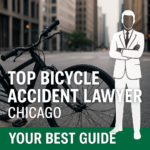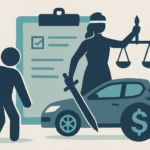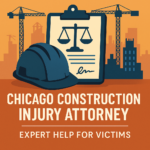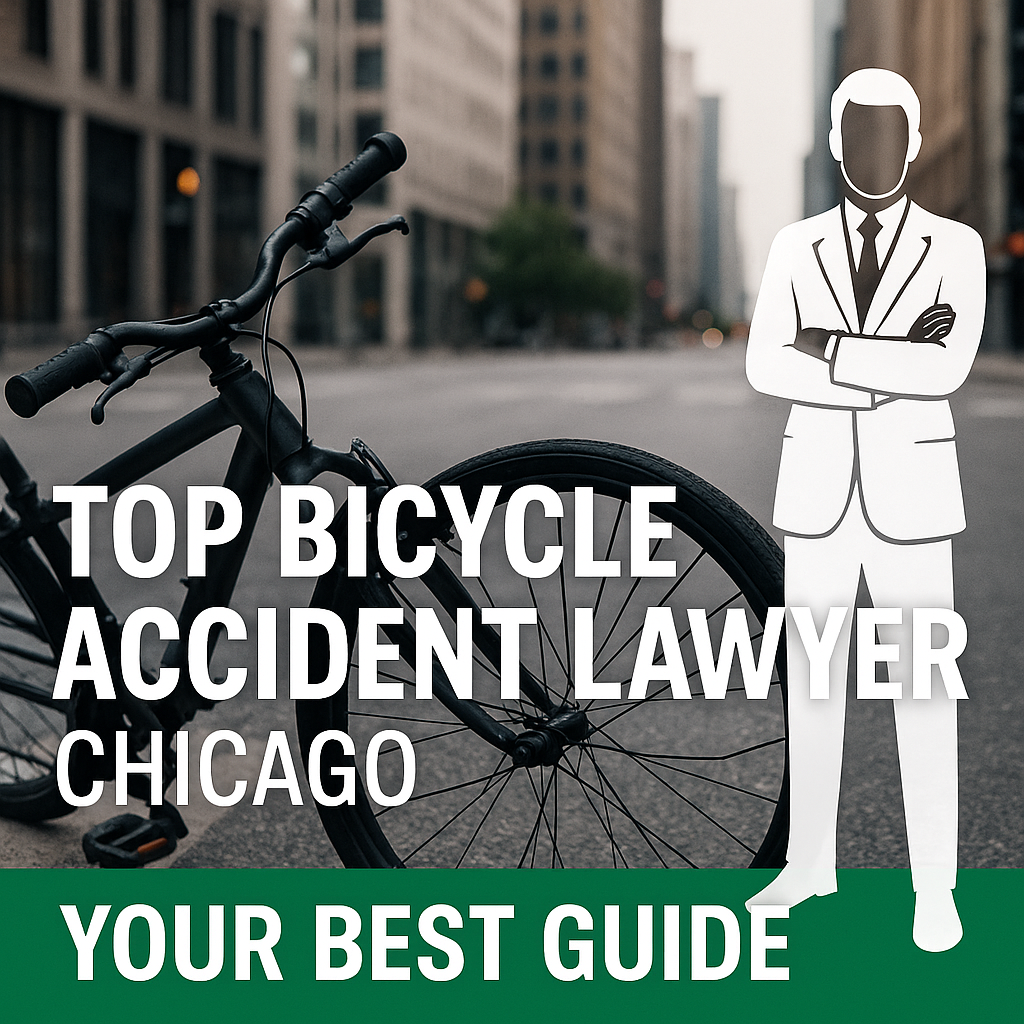
Car accidents happen every day, sometimes changing the lives of those involved in just an instant. For drivers and families impacted by these events, understanding the different types of car accidents can be crucial. Not only does the type of collision affect safety, but it also plays a significant role in determining liability and handling injury claims. In this article, we’ll delve into common accident types such as rear-end collisions, rollovers, and more, providing insights into their causes and implications.
Rear-End Collisions
Causes and Consequences
Rear-end collisions, rollover accidents, and head-on collisions are some of the most severe types of motor vehicle accidents, often resulting in catastrophic injuries or loss of life.
One of the primary causes of these accidents is distracted driving, which can include anything from using a mobile phone to interacting with passengers or adjusting in-vehicle systems. When a driver’s attention is diverted from the road, the risk of a rear-end collision or sideswipe accident increases significantly.
Another major contributing factor to accidents like head-on collisions is driving under the influence of alcohol or drugs. Impaired judgment and slowed reaction times can lead to devastating consequences, making it crucial for drivers to remain sober behind the wheel.
Speeding is yet another hazard that not only increases the likelihood of accidents but also exacerbates their severity. High speeds reduce the time available for drivers to react to unexpected obstacles or changes in traffic patterns, and this risk is compounded in adverse weather conditions like rain or fog.
Aggressive driving behaviors, such as road rage, can also escalate into dangerous situations on the road. Addressing these causes is essential not only for minimizing the occurrence of accidents but also for understanding their impacts in terms of liability and injury claims.
A deeper exploration into behavioral psychology may offer unique insights into preventative strategies that go beyond mechanical or infrastructural solutions.
Determining Fault
Determining fault in a rear-end collision is typically straightforward, as the driver who rear-ended the vehicle in front is presumed to be at fault. However, determining fault in other types of motor vehicle accidents can be more complex and involve analyzing various factors. Insurance companies conduct thorough investigations by examining site-specific information, such as photographs, witness statements, and surveillance footage, if available.
In multi-car pile-ups, establishing the chain of events and identifying the actions that triggered the accident is crucial for determining fault. Sometimes, both parties may share liability, impacting the negotiation of compensation. Police reports often play a pivotal role in these assessments, providing objective evidence of the incident’s circumstances. Incorporating technology like dash cams can provide first-hand video evidence, potentially simplifying the fault determination process.
Assessing fault in head-on collisions, rollover accidents, and broadside collisions can be intricate, as multiple factors, such as road conditions, weather, and driver behavior, come into play. Insurance companies carefully analyze these variables to establish responsibility and ensure fair compensation for the parties involved.
Understanding the complexities of determining fault in motor vehicle accidents empowers families to navigate their claims more effectively and hold the rightful parties accountable. Gathering comprehensive accident evidence, including witness statements, photographs, and video footage, is crucial for supporting these investigations and ensuring a fair outcome.
Rollover Accidents
Common Scenarios
Rear-end collisions are a common occurrence on roads and highways, especially during periods of heavy traffic congestion or sudden stops. In these situations, the trailing driver is typically presumed at fault due to failing to maintain a safe following distance.
Head-on collisions, where two vehicles collide front-to-front, are another frequent scenario that often results from distracted driving, driving under the influence, or failing to yield the right-of-way. These types of accidents can lead to severe injuries and fatalities.
Rollover accidents, where a vehicle tips over onto its side or roof, are also a prevalent occurrence, particularly with taller vehicles like SUVs and trucks. These accidents can be caused by a variety of factors, including speeding, overcorrecting, or losing control on a curve.
Motor vehicle accidents involving a single car, such as running off the road or hitting a stationary object, are also common and can result in significant damage and injuries.
Intersection collisions, where two or more vehicles collide at an intersection, are another frequent scenario. These accidents are often caused by drivers running red lights, failing to yield the right-of-way, or making improper turns. Sideswipe accidents, where the sides of two vehicles collide while traveling in the same or opposite directions, are also common and can be caused by improper lane changes, merging, or drifting out of a lane.
Parking lot accidents, while often considered minor, can also lead to complex liability issues, especially when pedestrians or multiple vehicles are involved in a confined space.
Understanding these common scenarios can help drivers anticipate potential risks and reinforce the importance of defensive driving strategies to minimize the potential for accidents.
Safety Measures
- Maintain a Safe Following Distance: Rear-end collisions can be prevented by keeping a proper distance from the vehicle ahead. Always follow the “three-second rule” and extend it in poor weather or congested traffic conditions.
- Utilize Advanced Safety Features: Vehicles equipped with blind-spot detection, lane departure warnings, and autonomous emergency braking significantly reduce the chances of a collision. Implementing these technologies can prevent accidents, particularly sideswipe accidents.
- Avoid Distractions: Staying focused on the road is crucial. Distracted driving is a leading cause of motor vehicle accidents, highlighting the importance of minimizing phone use and other interruptions.
- Perform Regular Vehicle Maintenance: Ensuring your vehicle is in top condition helps prevent mechanical failures that might lead to a single-vehicle collision. Routine checks on brakes, tires, and lights can avert unforeseen breakdowns.
- Adhere to Speed Limits: Speeding increases the risk and severity of accidents. Obeying speed limits, especially during parking lot maneuvers, helps maintain control and reduce collision risks.
- Foster a Calm Driving Environment: An underappreciated insight suggests managing stress while driving, which not only improves reaction times but also helps prevent aggressive driving tendencies, reducing the likelihood of accidents.
Head-On Collisions
Impact on Occupants
Motor vehicle accidents can have devastating consequences for occupants, often resulting in severe injuries or even loss of life. Rear-end collisions, rollover accidents, and head-on collisions are among the most common types of crashes that can cause catastrophic harm.
These collisions can lead to traumatic injuries such as broken bones, traumatic brain injuries, spinal cord injuries, and whiplash, which can require extensive medical treatment and rehabilitation.
Frontal impacts, in particular, account for a significant portion of passenger vehicle fatalities, according to statistics from the Insurance Institute for Highway Safety (IIHS). Side impacts or broadside collisions also pose a heightened risk of injury due to the vulnerable exposure of the occupants’ arms, legs, and head to extreme forces during the collision. The consequences of these accidents can extend far beyond the immediate physical injuries, with long-term effects on the victims’ quality of life and ability to work or perform daily activities.
The severity of injuries sustained in a motor vehicle accident can be influenced by various factors, including the occupant’s size, the type of vehicle involved, and the presence of advanced safety features such as crumple zones and airbags. Larger vehicles with these safety features can help mitigate the force transferred to occupants during a collision, potentially reducing the severity of injuries. This highlights the importance of considering vehicle choice and maintenance as part of an overall safety strategy when it comes to mitigating the impact of motor vehicle accidents.
Understanding the dynamics of different types of collisions and their potential consequences is crucial for families and individuals. Being informed about the risks and taking appropriate precautions can help prepare for and navigate claims more effectively in the event of an accident. Ultimately, acknowledging the profound impact of motor vehicle accidents on occupants underscores the necessity of prioritizing safety measures and responsible driving practices.
Single-Vehicle Accidents
Common Causes
Rear-end collisions, rollover accidents, and head-on collisions are among the most severe motor vehicle accidents, often causing catastrophic injuries or fatalities. These incidents frequently arise from various factors, such as distracted driving, excessive speeding, driving under the influence, poor weather conditions, and reckless behaviors like aggressive driving or road rage.
Distracted driving remains a leading cause, with drivers engrossed in activities like texting, eating, or adjusting in-car technologies, failing to notice changing traffic conditions. This lapse in attention frequently results in dangerous scenarios like rear-end collisions. Speeding, another significant factor, not only compromises the driver’s safety but also puts others at risk by reducing reaction time and increasing the likelihood of crashes and rollovers.
Operating a vehicle while under the influence of alcohol or drugs severely impairs judgment and slows reaction times, contributing to severe accidents such as head-on collisions. Additionally, poor weather conditions like rain, fog, and ice can reduce visibility and road traction, leading to single-vehicle collisions and multi-car pile-ups, especially in high-speed zones.
Reckless behaviors, including aggressive driving, road rage, and failing to yield at intersections, are major contributors to broadside collisions and sideswipe accidents. Fatigue, often overlooked, can have consequences similar to driving under the influence, increasing accident risks, especially on long highway journeys.
Preventive Strategies
Rear-end collisions, rollover accidents, and head-on collisions are among the most prevalent types of motor vehicle accidents that can result in severe injuries and financial losses. To mitigate these risks, a comprehensive approach encompassing driver behavior, vehicle maintenance, and environmental adaptation is essential.
One of the most effective preventive measures is practicing defensive driving, which involves maintaining constant vigilance, anticipating potential hazards, and making proactive decisions to avoid incidents like rear-end collisions. Regular vehicle maintenance, such as timely checks on brakes, tires, and lights, can also prevent breakdowns that could lead to single car wrecks.
Additionally, adjusting driving behavior to match weather conditions, such as reducing speed in rain or fog, can substantially decrease the likelihood of rollover accidents. Modern vehicle features like lane departure warnings and adaptive cruise control provide an added layer of safety against scenarios like sideswipe accidents.
Moreover, psychological preparedness plays a crucial role in preventing accidents. Ensuring a calm and focused mindset before getting behind the wheel can significantly enhance a driver’s ability to react appropriately to unexpected situations on the road, thereby minimizing accident risks.
Sideswipe Accidents
When Sideswipe Accidents Happen
Rear end collisions, rollovers, head-on collisions, and motor vehicle accidents frequently occur during specific times and seasons throughout the year. Statistics reveal that fatal accidents involving cars are particularly common during late afternoon and early evening hours, especially between 4 pm and 7 pm. This timing coincides with the rush of commuters heading home after a long workday, often fatigued and potentially distracted.
Moreover, weekends, notably Saturdays, see higher rates of serious crashes due to increased leisure travel and nighttime driving. Holidays like the Fourth of July also experience a spike in accidents as celebrations involving alcohol consumption become more prevalent during these periods.
Interestingly, many crashes happen close to home, even for experienced drivers. This reinforces the notion that familiarity can lead to complacency and inattentiveness, increasing the risk of rear end collisions, rollovers, head-on collisions, and other motor vehicle accidents.
By understanding these patterns, drivers and families can make informed decisions about travel timing and precautions. This knowledge empowers them to reduce the likelihood of accidents involving:
- Single car wrecks
- Rear-end collisions
- Parking lot accidents
- Broadside collisions
Additionally, it helps navigate liability should an incident occur.
Reducing Risks
In a rear-end collision, the driver behind is typically found at fault for following too closely or not maintaining a safe distance. To avoid these incidents, it’s crucial to adopt the three-second rule, especially in heavy traffic or poor weather conditions. Extending this duration in adverse circumstances further minimizes risk.
Regular vehicle maintenance is essential to prevent mechanical failures, a common cause of single-vehicle collisions. Routine checks of tire pressures, brakes, and lights help keep your vehicle in optimal condition, reducing the chances of sudden breakdowns and potential accidents.
Defensive driving techniques, such as staying alert and anticipating other drivers’ actions, can prevent common types of car accidents. Monitoring blind spots and side mirrors mitigates the risk of sideswipe accidents, while remaining vigilant can help avoid head-on collisions.
Modern automotive technologies like lane departure alerts and automatic braking systems significantly lower the chances of incidents by providing timely warnings and interventions. Prioritizing these safety features can be a game-changer in preventing accidents.
Distracted or impaired driving significantly increases accident risks. By remaining attentive and refraining from substances that impair judgment, drivers enhance road safety for themselves and others, particularly in high-speed areas prone to rollover accidents. A unique approach involves mindfulness practices before driving, promoting calm and focus, which can improve reaction times and reduce aggressive driving behaviors.
Broadside Collisions (T-Bone Car Accidents)
Critical Factors
Car accidents can occur due to various critical factors, many of which revolve around driver behavior and environmental conditions.
Rear-end collisions, a prevalent type of accident, often result from distracted driving, such as texting or using in-car technologies that divert attention from the road. Speeding exacerbates these risks, reducing reaction time and worsening the outcome of potential crashes like rollover accidents or head-on collisions during sudden stops or adverse weather conditions.
Another significant factor contributing to severe accidents is driver impairment due to alcohol or drugs. These substances can severely impair judgment and reaction times, increasing the likelihood of head-on collisions and other catastrophic crashes. Environmental factors like rain or fog can also pose dangers by reducing visibility and road traction, leading to single-vehicle collisions or sideswipe accidents.
It’s crucial to consider the physiological state of drivers as well. Fatigue can impair reaction times akin to driving under the influence, making it a critical factor in motor vehicle accidents. Encouraging regular breaks during long drives and fostering awareness of these risks could substantially mitigate accident occurrences and enhance road safety.
By recognizing these critical factors, drivers can not only reduce accident risks but also effectively navigate potential liability issues. Awareness of distracted driving, speeding, impairment, environmental conditions, and fatigue can help prevent devastating collisions and promote safer roads for all.
Motor Vehicle Accident Legal Implications
Motor vehicle accidents, such as rear-end collisions, head-on collisions, and rollover accidents, can have significant legal implications for all parties involved. Determining fault is crucial, as it directly impacts liability and potential compensation claims. In the case of a rear-end collision, the driver responsible for causing the collision typically faces traffic citations and may be subject to personal injury lawsuits. These legal proceedings meticulously examine various factors, including negligence and adherence to traffic laws.
When accidents result in severe injuries or damages, such as in a head-on collision, the legal complexities increase substantially. Victims may be entitled to compensation covering medical expenses, lost wages, and emotional distress. While insurance plays a vital role, policy limits often cap the recoverable amount, making legal guidance essential for optimizing claims. Additionally, in cases involving reckless driving, driving under the influence, or other forms of negligence, the potential for criminal charges arises, further complicating the civil proceedings.
Navigating the legal landscape surrounding motor vehicle accidents can be challenging for families. Thorough documentation and seeking legal counsel from experienced car accident lawyers are crucial steps in understanding the implications and ensuring that victims receive fair compensation for their losses. The legal ramifications of motor vehicle accidents highlight the importance of responsible driving and adherence to traffic laws, as these incidents can have far-reaching consequences for all parties involved.
Parking Lot Accidents
Navigating Liability
In a rear-end collision, the trailing driver is generally presumed liable for failing to maintain a safe distance. However, unique factors like sudden stops caused by the lead vehicle or mechanical failures may shift the blame. Determining liability can be complex, particularly in multi-vehicle accidents where multiple parties might share responsibility. It is crucial for involved parties to document the scene thoroughly, gather witness statements, and collaborate with law enforcement for accurate reporting.
An interesting aspect to consider is the role of state laws, such as comparative negligence, which might impact the final judgment on liability. This doctrine allows for the assignment of fault in percentages to all parties involved, influencing claim outcomes and compensation. Understanding these nuances can significantly aid families in managing liability claims effectively, ensuring they receive the compensation they deserve for medical expenses and damages. Having a knowledgeable legal advisor can clarify these complexities, guiding victims through the intricacies of legal proceedings.
Navigating liability in motor vehicle accidents involves understanding the legal responsibilities of each party involved. In the case of a rear-end collision, the trailing driver is generally presumed liable due to their failure to maintain a safe distance. However, unique factors such as sudden stops caused by the lead vehicle or mechanical failures may shift the blame. Determining liability can be complex, particularly in multi-vehicle accidents, where multiple parties might share responsibility. It is crucial for involved parties to document the scene thoroughly, gather witness statements, and collaborate with law enforcement for accurate reporting.
Quick Take Aways
Here are the key points from the article:
- Primary Causes of Accidents: Distracted driving, speeding, and driving under the influence are significant contributors to serious accidents, including rear-end collisions and head-on collisions.
- Determining Fault: In rear-end collisions, the trailing driver is often presumed at fault. However, determining liability can become complex in multi-vehicle accidents, requiring comprehensive evidence such as dashcam footage and witness statements.
- Common Accident Scenarios: Rear-end and intersection collisions are frequent due to factors like heavy traffic and failing to yield, while rollover accidents often involve taller vehicles like SUVs and can result from speeding or loss of control.
- Safety Measures: Effective strategies include maintaining safe following distances, utilizing advanced vehicle safety features, and adhering to speed limits to prevent common types of car accidents.
- Impact on Occupants: Accidents like head-on collisions can lead to severe injuries and long-term consequences. Vehicle choice and features like crumple zones and airbags play a crucial role in mitigating injury severity.
- Legal Implications: Understanding and navigating the legal aspects of vehicle accidents is vital for securing fair compensation. Legal complexities often involve determining fault, managing insurance claims, and addressing potential criminal charges.
- Navigating Liability: Liability understanding and documentation are essential, particularly in scenarios involving comparative negligence. Legal guidance can help clarify complexities and ensure appropriate compensation for medical expenses and damages.
Frequently Asked Questions
- What are the most common types of car accidents?
The most common types of car accidents include rear-end collisions, side-impact crashes, head-on collisions, and single-vehicle accidents. Each type has distinct characteristics and varying degrees of severity.
- How do rear-end collisions typically occur?
Rear-end collisions often happen when a vehicle follows too closely behind another, leading to a crash when the front vehicle suddenly stops. Distracted driving and poor weather conditions can increase the risk of these types of accidents.
- What is considered a side-impact collision?
A side-impact collision, also known as a T-bone accident, occurs when the side of a vehicle is hit by the front or rear of another vehicle. These accidents commonly occur at intersections where vehicles are crossing paths.
- Why are head-on collisions so dangerous?
Head-on collisions are particularly dangerous due to the high impact forces involved when two vehicles traveling in opposite directions crash into each other. These accidents often result in severe injuries or fatalities.
- What precautions can reduce the risk of single-vehicle accidents?
To reduce the risk of single-vehicle accidents, drivers should maintain focus by avoiding distractions, adhere to speed limits, and stay alert to road conditions and obstacles. Additionally, regular vehicle maintenance can help prevent mechanical failures.
Don’t Face an Accident Alone — Contact Ori Law Group Today
Understanding the dynamics and consequences of motor vehicle accidents, such as rear-end collisions, rollover accidents, and head-on collisions, is essential for drivers and families who may be affected. These incidents often result from factors like distracted driving, speeding, and impaired judgment due to alcohol or drugs. Consequently, they can lead to severe injuries and complex legal implications, significantly impacting the lives of those involved. Contact Ori Law Group today at (312) 621-0000 or visit orilawgroup.com to speak with an experienced car accident attorney.
The key to navigating these challenges is awareness and preparedness. Drivers can adopt practical safety measures such as maintaining safe following distances, utilizing advanced safety technologies, and conducting regular vehicle maintenance to minimize risks. Additionally, understanding how liability is determined in accidents—and the role of state-specific laws like comparative negligence—can empower families to pursue fair compensation effectively.
Moreover, recognizing the emotional and psychological components of driving, such as managing stress and fatigue, adds another layer of strategy to road safety. These proactive approaches not only curtail accident frequency but also equip individuals with the knowledge needed to handle aftermaths judiciously.
In light of these insights, the call-to-action for drivers and families is clear: prioritize vehicle safety and responsible driving behaviors. Stay informed about legal responsibilities and resources available to assist in accident claims. By embracing these strategies, we can collectively reduce the frequency and severity of motor vehicle accidents, ensuring safer roads for everyone. Educate others, make conscious driving decisions, and seek expert car accident legal advice when necessary to navigate liabilities with confidence and clarity.
References
National Highway Traffic Safety Administration (NHTSA). (2021). Types of Crashes
Insurance Institute for Highway Safety (IIHS). (2022). Fatality Facts 2020: Crash types and vehicle impact
Centers for Disease Control and Prevention (CDC). (2023). Motor Vehicle Safety
Federal Highway Administration (FHWA). (2022). Roadway Departure Safety
National Safety Council (NSC). (2023). Motor Vehicle – Type of Crash









